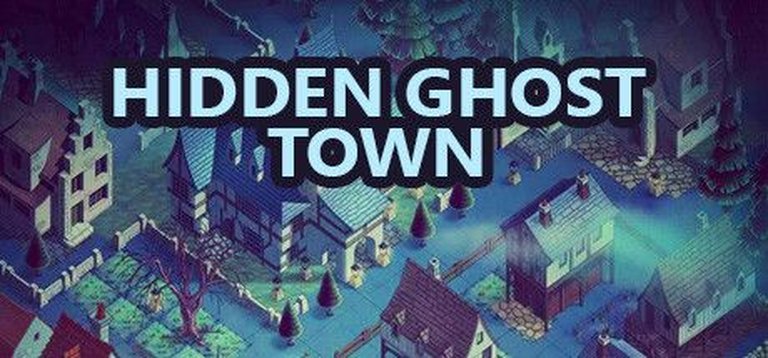- Release Year: 2021
- Platforms: Linux, Macintosh, Windows
- Publisher: HEDE Games
- Developer: HEDE Games
- Genre: Puzzle
- Perspective: Isometric
- Game Mode: Single-player
- Gameplay: Hidden object, Point and select
- Setting: Fantasy
- Average Score: 32/100

Description
Hidden Ghost Town is a hidden object puzzle game set in a mysterious, isometric fantasy world. Players explore a ghostly town, searching for hidden items and solving puzzles to uncover its secrets. Developed by HEDE Games, the game offers a mix of casual gameplay and strategic challenges, with a focus on discovery and exploration.
Where to Buy Hidden Ghost Town
PC
Hidden Ghost Town Guides & Walkthroughs
Hidden Ghost Town Reviews & Reception
steambase.io (32/100): Mostly Negative
Hidden Ghost Town: Review
Introduction
Hidden Ghost Town, released in 2021 with a full launch in 2023, is a hidden object puzzle game set in a whimsical fantasy world. Combining pixel art nostalgia with modern gameplay mechanics, the title initially captured the imagination of casual gamers. However, its journey in the market has been mixed, with players divided over its value proposition and depth of content.
Development History & Context
Developed by HEDE Games using the Unity engine, Hidden Ghost Town was first launched in Early Access in November 2021. After nearly two years, the full release arrived in March 2023. The developers aimed to capitalize on the popular hidden object genre, enhanced by pixel art-style graphics reminiscent of classic 16-bit games. However, their timing coincided with a saturated market where established franchises like Ruzzle normalize higher standards.
The game’s initial Early Access phase allowed for iterative development, but the long wait might have dampened player expectations. The team’s drive to build replay value through randomized object spawns was a novel angle but risked alienating players expecting linear puzzle experiences.
Narrative & Thematic Deep Dive
Set in a deadpan ballad of a ghost town, theacam leverage forworld-building. Players take on the role of a seeker, scanning serene landscapes to identify hidden objects. While the ostensible plot is a facade—after all, hidden object games rely less on narrative and more on visual treats—the fantasy setting adds a touch of magic. The game’s themes of discovery, serendipity, and the beauty in detail surrealistic charm to the gameplay loop.
The objects to find are not just mere props but part of the visual ecosystem. They encourage players to look beyond the obvious, appreciating the Tycho magnetic nature of pixel art. The thematic depth, however, remains shallow, focusing on the gameplay experience rather than storytelling.
Gameplay Mechanics & Systems
At its core, Hidden Ghost Town is a point-and-click hidden object game. Players navigate static, isometric scenes, seeking out 20 unique objects per level. The twist lies in the game’s dynamic object selection—the system automatically determines which object to find next, ensuring variety in each playthrough. This mechanism promises high replayability but also demands precise object recognition.
Clicking on the correct object nets points, while mistakes penalize the player. Scoring adds a layer of challenge and competition, though the leaderboard feature might leave some players indifferent. The UI effectively displays the current target, though some might argue for more detailed prompts or time limits to add tension.
The game’s controls are straightforward—click to select, no keyboard input required. Gamepads are supported but may not be intuitive, possibly a flaw considering the target demographic. The absence of additional gameplay elements like mini-games or narrative-driven sequences might leave players feeling dissatisfied after completing the main objectives.
World-Building, Art & Sound
The game’s artistic achievements overshadow its gameplay. The pixel art isizz provides a feast for the eyes. Each scene is richly textured/auth, with vibrant colors and precise detailing. The isometric perspective invites players to explore every corner, while the frozen characters and objects become the finder’s challenge.
Sound design, though minimal, complements the visual journey. Soft ambient sounds and melodic tracks set the mood without overpowering the gameplay. The limited but effective sound effects for correct and incorrect selections provide feedback without being intrusive.
The combination of these elements transports players to the ghost town aesthetic, making the sometimes tedious search worthwhile. Even if the gameplay lacks complexity, the art keeps players enraptured.
Reception & Legacy
Early reviews were mixed. On Steam, with over 14 user reviews at the time of writing, 42% were positive. The primary complaints revolved around the price—$199.99—deemed excessively high for a casual hidden object game. Other common gripes included brevity (levels completed within hours), lack of depth beyond the core mechanics, and occasionally obscure object placements bordering on unfairness.
Steam curators also provided feedback, with some praising the art but others echoing the price concern. The lack of professional critic reviews (as per Metacritic) suggests the title didn’t receive significant press attention, possibly due to its niche genre or independent development status.
Long-term, Hidden Ghost Town’s legacy may be confined to those who appreciate pixel art hidden object games. It doesn’t reinvent the genre but instead offers a polished entry point. The influence on future games is likely limited, but it may have inspired other developers to experiment with dynamic object selection in their hidden object titles.
Conclusion
Hidden Ghost Town ultimately occupies a unique yet challenging space in the video game landscape. With sublime visuals and an innovative approach to object selection, it captivates the eye but fails to fully engage the mind beyond surface dilemmas. The exorbitant price point and limited replay value temper its visual virtues. For the niche audience seeking relaxation and visual scavenging, it’s a languid charm. For everyone else, it’s aBASEPATHEdThis game could have been a gem if it balanced its aloof charm with substance and affordability.